George Melton Cagle
March 3, 2015
On september 19, 2014 I applied for a third adoption grave at both WW2 American cemeteries in Belgium. The adoption grave I became the Primary Sentinel of at the Henri-Chapelle American Cemetery is the one of PFC George M. Cagle.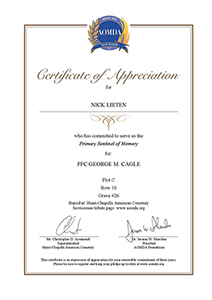 |
Before the war
George Cagle was born on January 19, 1925 in Prentiss County, Mississippi in the United States. He grew up in Booneville, Prentiss County in Mississippi.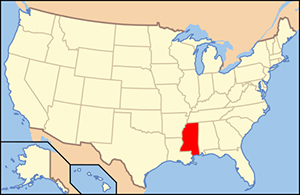 Mississippi, USA |
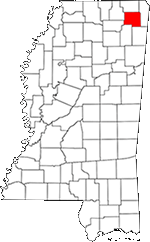 Prentiss County, Mississippi |
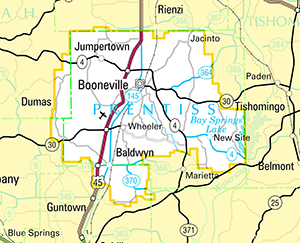 Booneville, Prentiss County |
|
Before the war, George was working on the farm with his parents. He had seven brothers and sisters.
Still looking for more information.
In the army
George Cagle entered service on July 2, 1943 in Mississippi as a Private First Class.It's not clear when George joined the 786th Battalion. This Battalion was founded on 23 September 1943 in Camp Chauffee, Arkansas. After their training, the 786th Battalion took the boat from New York on 1 December 1944 to arrive in England on 8 December 1944.

786th Tank Battalion (it's not sure if George is in this picture) |
On 23 January 1945 they crossed the channel to France. During the following weeks they moved on to the German border.
On 23 February 1945 they were attached to the 99th Infantry Division, an attachment they retained through the end of the war.
On 1 March 1945 the division left Aubel in Belgium in the pouring rain, following the 99th Infantry Division who was sent to the frontline between Düren en Jülich. They passed through the rubble of conquered Aachen and took the highway through Eschweiler where heavy fightings were going on too. They passed through Düren and arrived at the open plains of Elsdorf. These open fields and plains were a great chance to the American troops who had become used to fighting in what is termed in military parlance "close country". No hills, dense forests, muddy and bad roads, but just an open landscape where men could observate for hundres of yards in every direction. Here one could attack and expect results. The division did both.
The target was to take the Erft canal and the low line of hills north of the canal, the Vorgebirge hill, so as to punch a hole through the enemy line for the 3rd Armored Division to plunge through in its drive for Cologne from the north, and at the same time to cover the north flank of the VII Corps while driving to the Rhine.
The 99th Infantry Division was now the northernmost division of the First Army and on the immediate south flank of the Ninth Army.
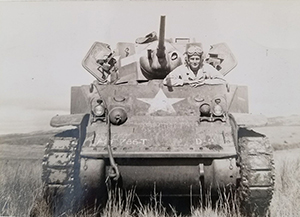
George Melton Cagle in his tank (photo: Nancy Houston Bonds) |
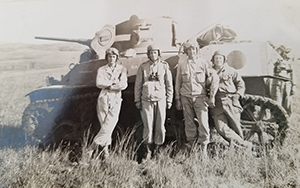
George Melton Cagle and his crew (photo: Nancy Houston Bonds) |
When the division arrived in Elsdorf in the evening, the sky cleared and a full bright moon came out. Around 23h00 there was a visit by Jerry planes who welcomed the Allies with much enthousiasm. They dropped bombs at their positions along the main supply route.
In the early monrning of 2 March the division started moving again. They crossed the Erft near Glesch and continued northeast along the canal. The 4th Cavalry Group that was attached to the division took the villages of Winkelheim and Buchholz before noon. The 3rd Battalion and 4th Cavalry joined together and moved on to Neurath, a village they took around 19h00.
The troops were galloping ahead so fast that when a phone rang at a coal briquet factory in Neurath, with the home office at Düsseldorf calling to find out where the Americans were, a lineman from the 99th Signal Company offered first-hand information.
The first day about 320 Germans were taken prisoner. The opposition was relatively weak, much less than expected. The enemy was confused and surprised and trying to get away because of the fast moving from the Allies.
The morning of 3 March saw the Allies drive really get under way. They started hammering away with two regiments. George Cagle's regiment moved to Neurath that day. It's this day George Cagle died in Neurath.
Death of George Cagle
George Cagle died on 3 March 1945 in Neurath, Germany. He was accidentally killed by a machine gun of a tank. At first was thought he was killed while the machine gun of the tank was being cleaned, but new information gives a new insight on the incident. I received this first hand witness report from Al Wilensky, a clerk of Company D of the 786th Tank Battalion during WWII, forwarded to me by Nancy Houston Bonds:"Reading the story of Melton brought back many memories. I don't recall knowing him, but his name was familiar, and so was the incident. As company clerk, I was responsible for preparing the morning report, a report issued daily detailing the activity of the company, including casualties. I recall vividly the day my 1st Sergeant E.J. Hanson told me about the accident. It did not involve gun-cleaning As I was told, the guns were supposed to be on-lock. The gun on this particular tank was not locked. A soldier reached down into the tank, searching for something (I don't recall what he was searching for) and accidentally touched the shooting mechanism of the gun. Apparently, Melton was standing in front of the tank when the gun went off, and was hit."
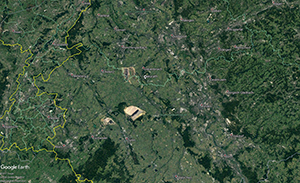
Neurath, Germany |
This was another big blow for the Cagle family, who had just lost another son in France. According to the relatives, the first thing George's mother said when hearing about his death was 'not again' with much despair. I can perfectly imagine it must have been like this. Seeing the military car pull up on the driveway again must be a terrible feeling.
George's family didn't have the money to bring him back home to be buried in the USA. His family was devastated because of this.
The shock was that big that they even forgot to fill in the insurance papers. As well when informed about Clyde's death as with George's death. It is believed they didn't want to fill in the papers. His father always thought of this as blood money and refused to accept this.
This is the letter they received informing them about George's death:
Dear Mrs. Cagle:
It is with deep regret that I confirm the telegram of recent date informing you of the death of your son, Private First Class George M. Cagle, 34,636,747, Infantry.
The official casualty report states that your son was killed on 3 March 1945 in Neurath, Germany. The report further states that he was killed accidentally by a machine gun of tank while cleaning the weapon.
I fully understand your desire to receive as much information as possible concerning his death. Recently provisions were made whereby there will be sent directly to the emergency addressee or the next of kin a letter containing further information about each person who dies overseas in the service of our country, and if this letter has not already been received, it may be expected soon.
I sincerely regret that this message must carry so much sorrow into your home and I hope that in time you may find sustaining comfort in knowing that he served his country honorably.
My deepest sympathy is extended to you in your bereavement.
Sincerely yours,
J. A. Ulio, Major General, The Adjutant General George Cagle is buried at the Henri-Chapelle American cemetery in Hombourg, Belgium.
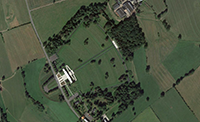
Henri-Chapelle American cemetery and memorial, Hombourg, Belgium |
There was a moment during the war George's mother had five brothers and three sons that served in the war. Her son Richard fought in the Pacific and returned home on 25 January 1946. He was Geralds best friend and his big hero. Richard had a rough time after the war and had a lot of trouble talking about his experiences and probably the loss of good friends in the war.
Her other son Clyde was in the 8th Division and arrived in Normandy on 4 July 1944. On 12 July 1944 he was KIA by an 88 in the French city of Saint-Lô.
786th Tank Battalion, 99th Infantry Division
 786th Tank Battalion |
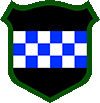 99th Infantry Division |
 Private First Class |
The 786th Tank Battalion was founded on 23 september 1943 in Camp Chaffee, Arkansas. It was originally meant to be the 1st Battalion of the 47th Armored Regiment, but this was later changed and it became an independent battalion.
After training, the 786th took the boat to London in New York on 1 December 1944. They arrived in England on 8 December 1944. On January 22 1945 they arrived in Le Havre in France.
On 23 February 1945 they were attached to the 99th Infantry Division. They were taken to the front near Weisweiler in Germany at the beginning of March.
It was then they went in support of the 99th Infantry Division when they attacked near the Rhine in the vicinity of Düsseldorf. They moved up to the river Weid and operated near the Frankfurt-Düsseldorf Autobahn.
In April they operated in the Ruhr-pocket. On 17 april 1945 they moved to Bamberg with the 99th Infantry Division.
On the 1st of May 1945 operations stopped in the region of Landshut.
Contact
In March of 2015 I requested for another adoption grave at the Henri-Chapelle American cemetery. By the end of the month I was informed I had adopted the grave of George M. Cagle.By now it's standard I contact my good American friend Andi to look for relatives in the US. This didn't seem to be an easy task and we quickly found out no relatives could be found through Ancestry.
Time passed until I got the help from Monty McDaniel who could point out some possible relatives of George Cagle on Facebook. I immediately sent messages to some of them and got a response from Leah Cagle Bishop. She's the daughter of Gerald, one of George's brothers. Her father was born after George was killed so he never knew his brother.
By now I'm in contact with two other nieces of George too, Nancy and Cynthia.
Personal information
Private First Class, U.S. ArmyService # 34636747
786th Tank Battalion, 99th Infantry Division
Entered service from Mississippi on July 2, 1943
Born: January 19, 1925 in Prentiss County, Mississippi
Hometown: Booneville, Prentiss County, Mississippi
Died: March 3, 1945 in Neurath, Germany
Status: died non battle (DNB)
Buried: Plot C, row 10, grave 26, Henri-Chapelle American Cemetery, Hombourg, Belgium
Awards: /
Family
Father: George W. Cagle
Mother: Maggie L. (Duncan) Cagle
Brother:Gerald Duncan (1948-2010), Clyde Franklin (1921-1944), William Richard (1923-1970), Dayton Winford (1919-1991
Sisters: Carrie Aletha (1927-2001), Mauveline (1929-2007), Gladys Dean (1931-1933)
More pictures
George Cagle
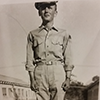
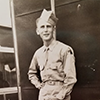
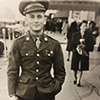
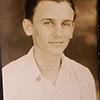
Family

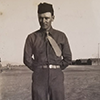
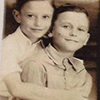

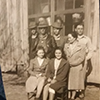
Grave
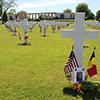
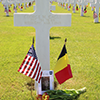
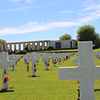
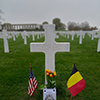
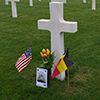
Documents
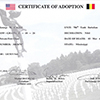
Miscellaneous
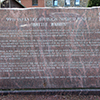
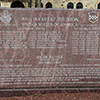
Sources
Any information you can provide me about this soldier, can be mailed to me (nicklieten at hotmail.com). Thank you!